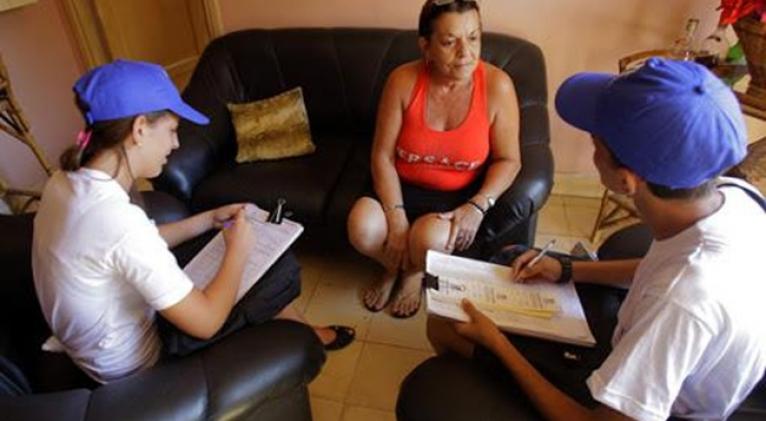
Havana, May 20th. - The population is the object and subject of development, recalled only a few days ago the Deputy Chief of the National Office of Statistics and Information (ONEI), the master's degree in science Juan Carlos Alfonso Fraga.
That is why it is essential for the economic and social development of the country to know the characteristics of its population in terms of composition, structure, dynamics, fertility, sexual and reproductive health, mortality, morbidity and spatial mobility.
And on Monday the first steps begin for a new Census of Population and Housing in Cuba, which will provide much necessary information.
The Previous or Pre-cense Registry will constitute this first phase, which will continue with the Censal Test, and finally, with the Censal Uprising.
This Pre-Censo, together with the cartographic update, is necessary for the planning and census survey, and consists of the collection of statistical information of all the economic and social infrastructure of the country, from the centres that provide any type of service to housing or accommodation units.
When visiting the houses, on this occasion only two data will be requested: name of the head of the household and number of residents of the house.
Head of household means a person resident in the same person who is considered and recognized as such by other cohabitants. It doesn't necessarily have to be the highest-income person, or the person who appears as head of the core in the supply book, or the one who legally appears as a homeowner.
It will be social workers who, as enumerators, will collect this information. They will carry an identification credential with the ONEI logo and carry out the lifting using a mobile capture device, (Tablet, mobile phone) programmed only with that goal.
Currently, and managing round figures, Cuba has 9.8 million inhabitants, the result of a population decline that in the last five years has been 1.4 million.
This decrease in the number of inhabitants - which includes populations of school, labor, military and reproductive age - has been motivated, according to Alfonso Fraga, by migratory movements abroad and a contraction in the number of births.
In addition to shrinking, the population also ages. And bringing the magnifying glass, from the demographic sciences, closer to the current reality of Cubans, will be decisive in acting in the present and projecting the future, based on solid statistical bases.
The director of the Center for Population and Development Studies (CEPDE), Diego Enrique González Galbán, said that the census plan was planned for 2022, but the effects of the pandemic and the existing difficulties were some of the aspects that prevented the fulfillment of this work. (Text and Photo: Cubasí)